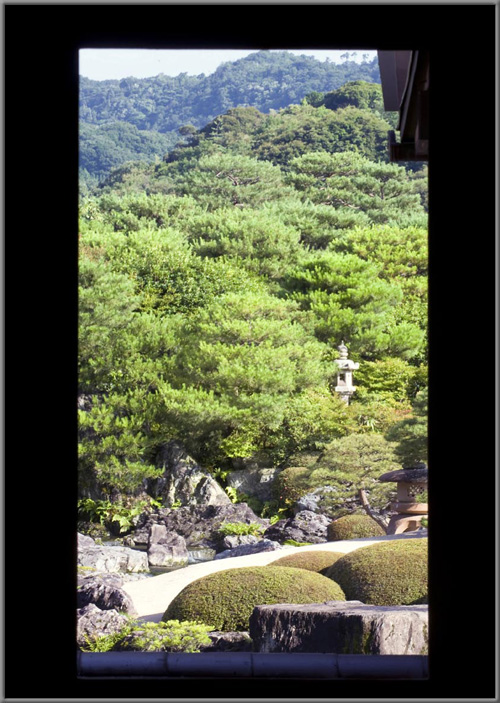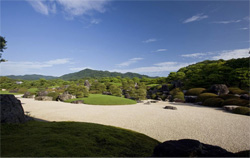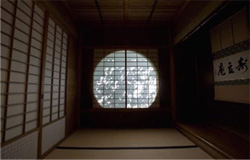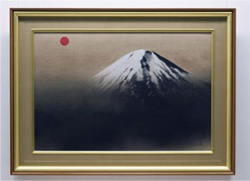Home > Highlighting JAPAN > Highlighting Japan JULY 2011 > The Adachi Museum of Art
Highlighting JAPAN
THE NATION'S MUSEUMS

Caption: Tokonoma alcoves traditionally feature a hanging scroll of calligraphy or fine art;
the alcove in this room is a "living" hanging scroll, offering visitors a constantly changing view of the
White Gravel and Pine Garden.
Credit: ROBERT GILHOOLY
The Adachi Museum of Art
All art museums change their exhibitions from time to time. Not many are able to redefine their entire environment in tune with the changing seasons. Julian Ryall visits the Adachi Museum of Art.

Many views from the museum demonstrate the shakkei principle of incorporating background landscape into the garden composition, such as this view of the Dry Landscape Garden.
Credit: ROBERT GILHOOLY
Founded in 1980 by the late Zenko Adachi, the garden has been meticulously constructed to take visitors through its seasonal expressions of natural beauty, which complement the paintings that hang on the interior walls.
Entering the museum, I am greeted by the first of six distinct yet connected traditional gardens. The reception garden seems designed to calm and enchant me with its flowers, bird life, breezes and neat gravel. I pause for several minutes to let my mind and body adjust.

The toritsugi no ma entranceway (a four-mat tatami room), which is one of four rooms in the Juryu-An Tea House. On the right, a hanging scroll which spells out the name of the tea house.
Credit: ROBERT GILHOOLY

Yokoyama Taikan "Mt. Fuji" (1942)
The Adachi Museum of Art holds the largest single collection of paintings by Yokoyama Taikan. Pictured, one of many paintings by the artist depicting Mt. Fuji.
Credit: ROBERT GILHOOLY
Interestingly, there is a house near the Pond Garden in which Zenko used to live, wherein I found an unusual tokonoma alcove. This alcove does not feature the conventional scroll, but instead has an open window onto the garden beyond. I find myself entranced by the living, moving artwork that it frames.
The final outdoors exhibit is the White Gravel and Pine Garden, which expresses an image painted by Yokoyama Taikan and is the perfect way to make the transition from the gardens—which have been recognized in the Michelin Travel Guide to Japan with three stars—into the interior displays.
Here, the works of Yokoyama Taikan feature large in the museum's highly prized collection. Adachi had echoed other critics' assessments that a painter such as Yokoyama only emerges every 300 years or so. And as I admire his paintings, I find it hard to disagree.
| Access and Admission | |
| Address: | The Adachi Museum of Art, 320 Furukawa-cho, Yasugi City, Shimane Prefecture, 692-0064 |
| Tel/Fax: | +81 854-28-7111/+81 854-28-6733 |
| Website: | https://www.adachi-museum.or.jp/en/ |
| Opening Hours: | From 9 a.m. to 5:30 p.m. daily from April to September and from 9 a.m. to 5 p.m. between October and March. |
| Admission: | Adults ¥2,200; University students, ¥1,700; High school students, ¥900; children, ¥400. |
© 2009 Cabinet Office, Government of Japan






